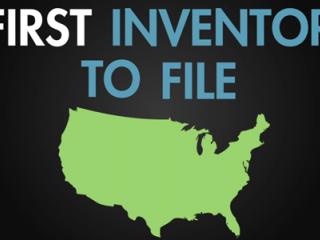
Shielding Invention Disclosure Forms From Discovery
© 2003, Gallagher & Dawsey Co., LPA
March 2003
Very few companies realize the significance their in-house invention submission process may have on the value of a later issued patent. The early 2000 Federal Circuit decision in In Re Spalding Sports Worldwide, Inc., 203 F. 3d 800 (Fed. Cir. 2000) clarified several issues surrounding invention disclosure documents.
Patent litigators have long recognized the potential goldmine of damaging information that is often contained in invention disclosure documents. After all, inventors often quickly fill out the documents with little knowledge of patent law, and often include statements that may come back to haunt the company in subsequent litigation. Inventors often point out many of the shortcomings of their inventions, while downplaying the strengths. Additionally, it is not uncommon to see potentially damaging statements such as “after reviewing competitor X’s products/processes I realized that a small amount of refinement would achieve Y” written in an invention disclosure. While such a statement may appear harmless at the time it is written, it would appear differently when it is an enlarged courtroom display in a lawsuit between competitor X and your company.
The first courtroom argument made for the discovery of invention disclosure documents will be that the documents are not protected by the attorney-client privilege. Similarly, your company’s best method of keeping invention disclosure documents out of the courtroom is to have an invention disclosure process that ensures that the documents do fall under the attorney-client privilege.
Prior to In Re Spalding Sports Worldwide, Inc., most courts were of the opinion that a company’s patent attorneys acted simply as a “conduit” between the company and the Patent and Trademark Office. Therefore, even though disclosure forms were ultimately given to an attorney for legal advice, they were not protected by the attorney-client privilege and therefore had to be turned over to opposing counsel.
The Federal Circuit, in In Re Spalding Sports Worldwide, Inc., found that disclosure documents may not be discoverable during litigation if they were prepared and provided to an attorney primarily for the purpose of obtaining legal advice on patentability, and legal services in preparing a patent application. The Federal Circuit noted that attorney-client privilege protects information given to an attorney that is required for the attorney to give sound and informed advice. Unfortunately, when an inventor completes an invention disclosure form it is most often used to inform management of the invention.
To ensure the greatest safeguard against discovery, companies should implement invention disclosure processes whereby the documents are transferred as a confidential memo directly from the inventor to the company’s legal department, or patent attorneys, explicitly for legal advice and services regarding patentability. After this initial transfer the inventor and the attorneys can discuss distribution of the documents to other company personnel.
